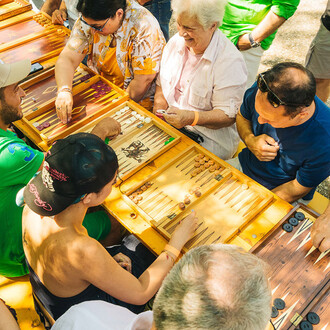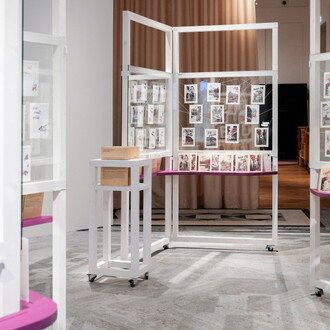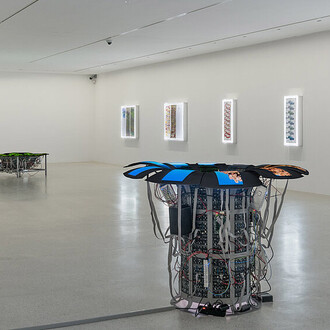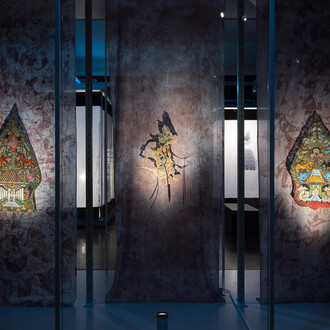Inspired by the tableau with the wooden ornaments of the minbar of the Ibn Tulun Mosque in Cairo from the year 1296, a masterpiece of the Mameluke era, the artist Adriana Czernin developed a work series that takes as its theme the different aspects of geometric construction. In doing so, she sees ornament as a metaphor for cultural, social, and personal entanglements. The expansive works in the MAK exhibition paraphrase the fragmentary nature of the parts from the minbar that have been in the collection of what is today the MAK since 1907.
Czernin’s first points of contact with this major work of Egyptian art history occurred already in 2014. At the invitation of the MAK, she worked on the largeformat pencil drawing Nach Ibn-Tulun [After Ibn Tulun], so to speak the initial impetus of the work series. This has resulted in strictly geometric works, their lines seeking connections between central points.
Czernin pursues not only the strictness of the system with all its symmetries and repetitions, but also potential asymmetries. The deliberate removal of certain ornamental parts generates a dynamic composition of seemingly free forms that spread out over the picture area, transversing and penetrating other elements.
Construction and deconstruction—keeping to strict rules but also breaking and dodging them are components of Czernin’s intensive work with the ornamental element. Apart from the strictly formal approach to the historic relict’s language of forms, Czernin focuses on the function of the ornament as vehicle of tradition and religion, thus alluding to its transcendent significance in the religious context. The inherent themes of her work series involve the sublimation of the individual in the infinity of order, the potential swoon into the ecstasy of optical perception, and the function of the ornamental element as a way towards contemplation.
Adriana Czernin was born in 1969 in Sofia and has lived and worked since 1990 in Vienna and Rettenegg (Styria). She completed the class for free graphics at the University of Applied Arts Vienna in 1998.
















